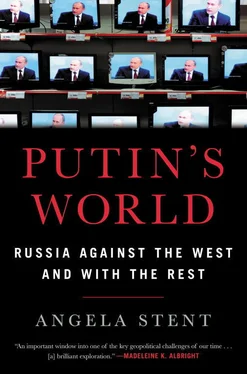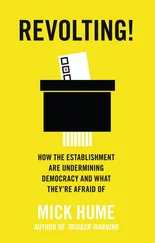Russia and the US did cooperate in 2013 to remove Syrian chemical weapons. However, the unfolding situation in Ukraine, Russia’s crackdown on opponents of Putin, and passage of legislation discriminating against the LGBTQ community led to further mutual recriminations. Then came the annexation of Crimea, more US sanctions against Putin associates, the launch of the war in the Donbas, and far-reaching financial sanctions against Russian entities. In 2015, after Russia entered the war in Syria, the US and Russia had to communicate constantly in order to avoid direct conflict between their militaries. But with no progress in Ukraine and a growing mutual wariness, the relationship had sharply deteriorated. As a senior Obama official put it, “It’s very hard to build a bridge to Russia if Putin’s main goal is to thwart the United States.”
And then came the 2016 presidential election campaign. US-Russia relations plunged to a new low as Russia became a toxic issue in American politics, now part of a bitter partisan divide over Donald Trump’s unexpected victory.
 12
12 
THE RIVALS
Russia and America in the Age of Trump
And to those who in the past fifteen years have tried to accelerate an arms race and seek unilateral advantage against Russia, have introduced restrictions and sanctions that are illegal from the standpoint of international law aiming to restrain our nation’s development, including in the military area, I will say this: everything you have tried to prevent through such a policy has already happened. No one has managed to restrain Russia.
—Vladimir Putin, 2018 1
Vladimir Putin addressed an enthusiastic crowd in the Manezh Central Exhibition Hall opposite the Kremlin two weeks before his reelection to a fourth term in March 2018 as he gave his Address to the Federal Assembly. The first half of the speech contained pre-election promises made by candidates in most countries: fix the economy, provide more jobs, improve the country’s infrastructure. But in the second half, he dropped several bombshells—almost literally. In bellicose tones, Putin rolled out Russia’s new generation of nuclear weapons designed to destroy those of the United States. A video animation showed a new, improved intercontinental ballistic missile (ICBM) taking off from Russia, flying over the South Pole, evading detection by US missile defenses, reaching South Florida, and deploying multiple warheads on a target that looked suspiciously like Mar-a-Lago, President Donald Trump’s sprawling estate and golf club.
Putin did not stop there. He went on to describe four new superweapons Russia was developing, including a nuclear-armed cruise missile and an intercontinental undersea drone. He then invited the Russian people to join a competition and send suggestions for naming these new weapons systems to the Ministry of Defense website. The country responded. After the seven million votes had been counted, the ministry announced three names: “Peresvet” for a laser, named after a medieval warrior monk who had battled the Mongols; “Burevestnik,” for a cruise missile, named after a storm petrel bird; and “Poseidon” for the underwater nuclear drone, named after the Greek god of the sea. 2
Putin’s message to the United States during his speech was explicit: You did not listen to us when we objected to your unilateral withdrawal from the Anti-Ballistic Missile Treaty in 2002 or when we opposed NATO enlargement. You disrespected us, treated us as junior partners, and took us for granted. But Russia is back and will respond to any provocation from you. You must, at last, take us seriously now.
This was a campaign address designed for a domestic audience, to appeal to patriotic pride in an era of economic constraints. It was not clear whether Russia actually possessed any of these new weapons or was indeed developing them. Nevertheless, the tone and content signaled that the arms race was back. The Trump administration had set the stage, several weeks prior to the speech, with a new National Defense Strategy that named Russia (along with China) as one of the main threats to the United States. 3Its Nuclear Posture Review, published shortly thereafter, identified Russia as a key challenge and said the United States had to enhance its own nuclear deterrent to counter the increasing global threats. 4Moreover, Donald Trump had committed the US to raising the Pentagon’s budget for nuclear weapons to counter the growing Russian buildup.
Putin’s speech, with its unmistakable Cold War overtones, was a far cry from the scenes the day after Donald Trump was elected, when champagne corks popped in Moscow. But Donald Trump’s much-anticipated reset with Russia never happened. Since he entered the White House, US-Russia ties have resembled the two-headed eagle on the Russian flag. One head represents an adversarial relationship similar to that of the second Obama administration, which is supported by most of the executive branch. The other, favored by Trump himself, suggests the aspirational, forward-leaning approach of two pragmatic deal makers who, for their own reasons, would like to improve ties, disregarding what has led the two countries to such an impasse.
The situation is quite unique. The new element in Putin’s world since 2016 is that Russia has become part of the US domestic political debate. US-Russia relations have not been this adversarial since before Mikhail Gorbachev came to power, partly because Russia has become a toxic issue in the United States in an unprecedented way. Allegations about both Russian interference in the 2016 elections and improper financial and political ties between the Trump campaign and Russians have hamstrung the president and made it difficult for him to move forward to improve ties. Not since the McCarthy era in the 1950s has Russia been such a divisive political topic.
THE 2016 US PRESIDENTIAL CAMPAIGN
During the highly polarized US election campaign, government officials became aware that hacking activities involving Democratic Party officials’ e-mail accounts and their subsequent leaking to WikiLeaks originated from Russian sources. But the full extent of these actions—and their links to the Kremlin—became public only after the election of Donald Trump, the most unorthodox candidate ever to enter the White House. According to the February 16, 2018, indictment handed down by Special Counsel Robert Mueller, the Saint Petersburg–based Internet Research Agency, run by Russian oligarch Yevgeny Prigozhin, “began operations to interfere with the US political system, including the 2016 US presidential election” as early as May 2014. 5They exploited social media to create false personas and remotely organized rallies of right-and left-wing groups in Texas and other states from 5,000 miles away. But the Russian interference went beyond exploiting social media to direct cyber interference—hacking e-mail accounts and leaking their contents to WikiLeaks. The major US intelligence agencies published a declassified version of their report Assessing Russian Activities and Intensions in Recent US Elections in January 2017. Their conclusions were sobering:
We assess Russian President Vladimir Putin ordered an influence campaign in 2016 aimed at the US presidential election. Russia’s goals were to undermine public faith in the US democratic process, denigrate Secretary Clinton, and harm her electability and potential presidency. We further assess Putin and the Russian Government developed a clear preference for President-elect Trump. 6
Читать дальше

 12
12 










